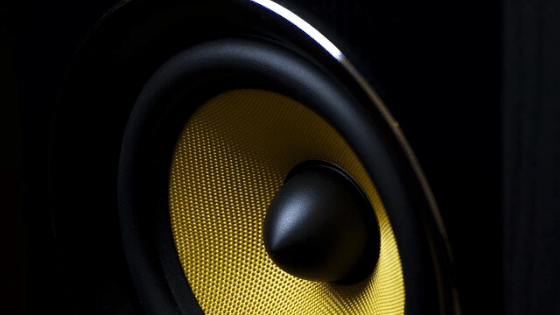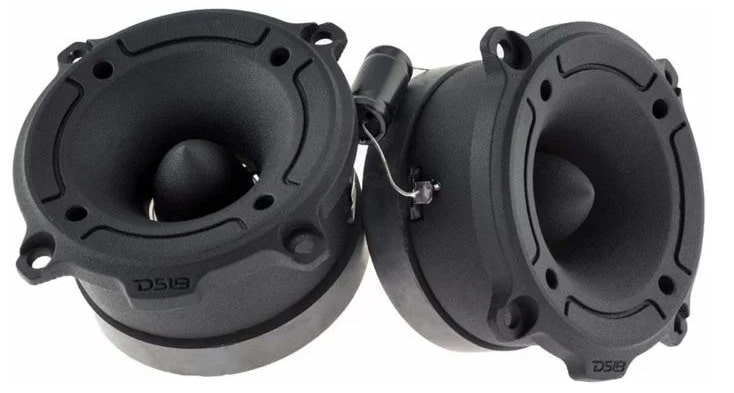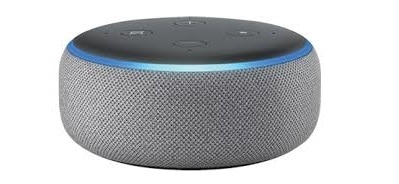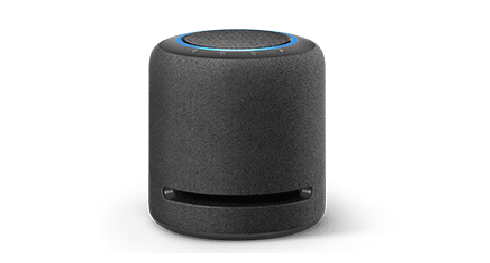Woofer, tweeter and mid-range speaker are drivers present in audio boxes, such as the Amazon Echo and Echo Studio for better bass, treble and mid-tone reproduction. Understand what each model is, the difference between the three and the relationship between the diameter and the frequency produced by each.

Sound Frequencies
Before getting into the differences between the speakers, it is important to understand what the frequencies are when talking about sound, measured in Hertz (Hz).
Basically, frequency determines the number of cycles per second that a device can produce. 1 Hz means completing one cycle in one second, while 10 KHz is 10,000 cycles in one second.
These cycles represent the sound waves from the vibration that a source emits. The larger the number of cycles, then the higher the pitch (higher pitch). The smaller the number of full cycles in one second, the lower the tone, and the more severe it is.
The human ear can have a perception of frequency variation between 20 Hz and 20 KHz (20,000 Hz). The video below shows the gradual increase in frequency, notice how low waves start to get higher according to the amount of cycles per second.

In other applications, such as on a monitor or smartphone screen, frequency represents the number of times the screen refreshes. The common is 60 Hz (60 updates per second), but 90 Hz, 120 Hz, and even 240 Hz refresh rates have already begun to appear in high-end models.
What is woofer, tweeter and mid-range speaker?
Woofer, tweeter and mid-range speakers are speaker drivers. All three are used to form a better audio quality speaker, but are not necessarily found in all sound equipment.
Woofer is the largest of them, it has the cone shape to move air and emit sound waves from it. You may have noticed that this box cone moves with the sound up and down as the animation below:

Each complete movement when the cone leaves its original position and then returns to it corresponds to one cycle and each cycle at 1 Hz, as stated above. This means that the higher the frequency, the faster the cone moves up and down.
However, woofers are speakers that operate at low frequencies and therefore emit bass sounds, usually between 50 Hz and 4,500 Hz, depending on its diameter.
Tweeter, on the other hand, operates at higher frequencies to reach 20 KHz and the loudest sounds. They are much smaller than woofers and therefore can move the cone faster, reaching the highest frequencies.

Tweeter
The two complement each other to print a better sound quality to the listener. Each with its own limitation. They are built to best suit a certain frequency scope and thus deliver a better sound experience.
What about mid-range speakers?
Mid-range speakers are generic mid-range speakers used for instruments and voice. They are not good at bass like woofers or highs like tweeters.
However, a speaker can only have only mid-range speakers, but never just woofers or tweeters. Most likely, when there is a woofer in a box, there is also a tweeter for frequency compensation.
For example, the 3rd generation Amazon Echo has a 3 inch woofer and a 0.6 inch tweeter, the drivers complement each other to achieve high and low frequencies.

But the Echo Studio, and bring a woofer and a tweeter, it is also built with three mid-range 2-inch speakers to complement the audio with the most defined midtones. The smaller Echo Dot only has a mid-range speaker.

Speaker diameter influences what?
One of the important features of the woofer, tweeter and mid-range speaker is the diameter size, measured in inches. The larger this dimension, the more air the driver can move with each cycle.
The more air, the greater the impact generated and the lower the frequency the device can reproduce. Thus, woofers are larger to deliver lower sounds and smaller tweeters to move less air and higher frequencies.